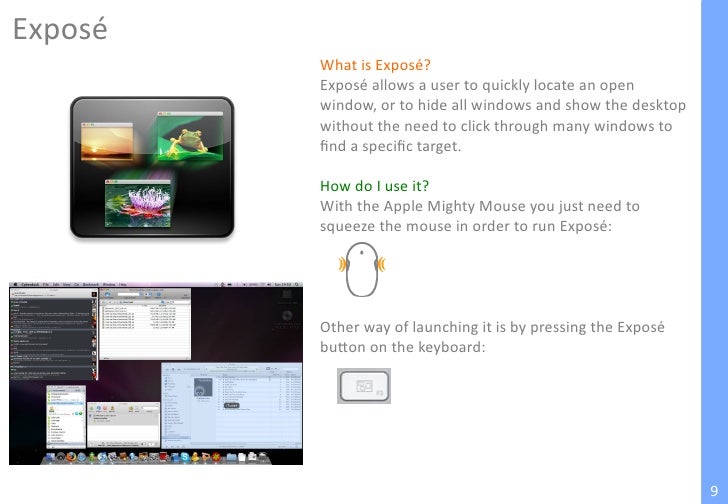- Buy Mac Os 9
- Mac Os 9 Manual 2017
- Mac Os 9 Manual Download
- Mac Os 9 2
- Mac Os 9.1 Download
- Mac Os 9 Manual Pdf
Apple Macintosh Instruction Manuals (User Guides) As per reader requests, direct links to official Apple Macintosh instruction manuals in PDF format - hosted by Apple's own support site- are provided below as well as on the specs page for each G3 and newer Mac. This chapter describes the installation of your print server in Mac OS 9/8 systems. The installation of the print server in Mac OS 9/8 systems is done almost automatically. To configure the print server in Mac OS 9/8, an additional virtual printer with a name expanded by 'ADM' is installed. As its title indicates, Mac OS 9: The Missing Manual touts itself as the guide that should have come with your copy of Apple's operating system. It certainly makes a strong case for that claim, as author David Pogue offers a wealth of information from the basics to some of OS 9's more esoteric functions.
5
1
Installing the Mac OS
Step 1:
Start Up From the Mac OS CD
Before you begin, turn off any security or virus-protection software you have installed on your
computer.
If you have a PowerBook, plug it in and use the Energy Saver control panel to set it so it
doesn’t go to sleep.

Next, start up your computer using the Mac OS CD.
Buy Mac Os 9
1
Insert the CD in your computer’s CD-ROM drive.
2
Shut down your computer.
3
Turn on your computer while holding down the C key on your keyboard.
Continue holding down the C key until you see the smiling face.
You’ll know you’ve started up from the CD when your computer’s desktop pattern changes to
a light-colored background that says “CD.”
Need help starting up from the CD?
If your computer won’t start up from the CD, or if it doesn’t have a CD-ROM drive, see
“Troubleshooting Information” on page 9.
As of the posting of this tip, the Mac OS 9 downloads on Apple's support site are not fully available.
This tip of a method of obtaining the downloads was suggested by sdfox7. Special thanks to them for decoding
how to discover old downloads.
Locate the support.apple.com website for the download. In the case of most of the system downloads for Mac OS 9, there is this link:
and

In event the link doesn't work, go to http://web.archive.org/ to find it. For this link, the example site is:
If you are looking for the 9.2.2 download, the direct link from that page is
Clicking through
Mac Os 9 Manual 2017
First on the page you will find North American English, 9.2.2, 21.3MB.
When you right click, or control-mouse button the download link and select copy link, you obtain:
Edit this link to reveal just the file name and not the path going to it and paste it in your favorite search engine. In this case, the file name is:
Mac_OS_9.2.2_Update.smi.bin
Searching you'll find that this link has that download.
As it happens, the website:
has the download links for all the Mac OS 9 updates and others.
You can use a similar method for many other downloads of older software.
As I also found out, .bin files even Mac OS X 10.9 understands. .smi files Disk utility won't open in Mac OS X 10.9, but it will convert to .dmg files.
If you copy the contents to a USB Flash drive of the same name as the dmg file (without the suffix), it can hold the installer in question and connect older Mac OS 9 machines to run the installer from. Just make sure the USB drive is formatted HFS+ no journaling, or FAT16 and under 4GB in size.
The other thing to note, is that no Mac running Mac OS X 10.3 or higher supports the old style floppy disks of under 1.4 MB. The beige PowerMacs were the last that supported the 800k floppies with the single notch on the the corner. If you have floppies with two notches on either corner of the label, then they are 1.4 MB.
1.4 MB floppy looks like:
400k and 800k floppy look like:
Mac Os 9 Manual Download
Note how the 800k only has one notch for the write protect tab, and no other opening on the other corner.
The thread I learned about this method isLinks for Mac OS 9 Downloads are faulty!
Other older knowledgebase links can be found by this tip's methods:
Some of the articles linked to for these updates may refer to the old knowledgebase format which may yield links you can convert with archive.org,
as described below:
Mac Os 9 2
Mac Os 9.1 Download
Mac Os 9 Manual Pdf
Note: the ii.net mirror that used to be linked to no longer exists.